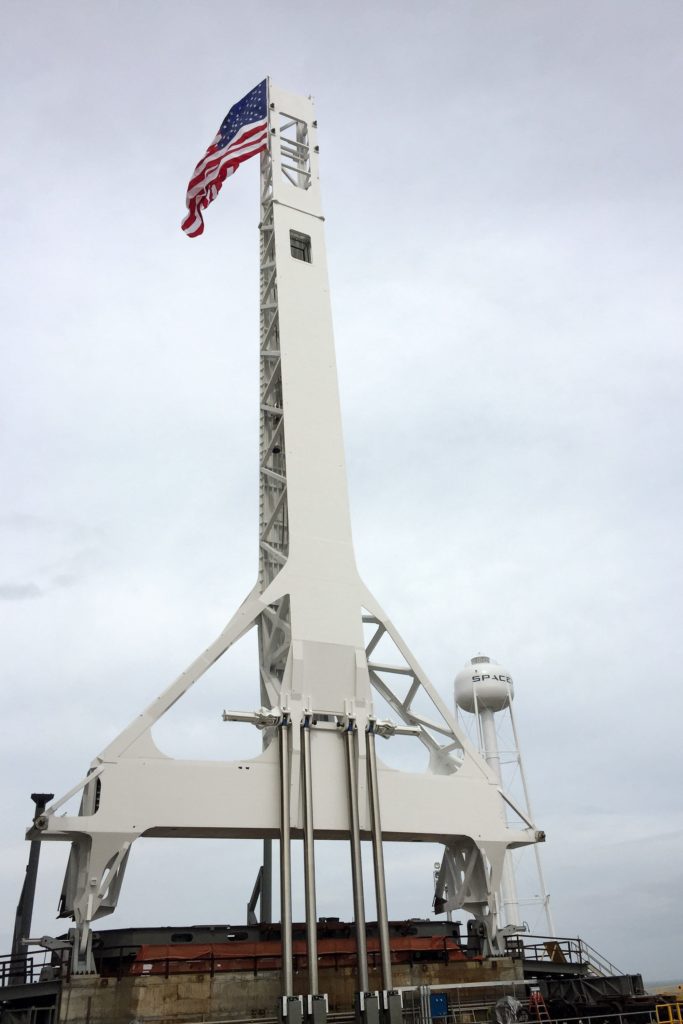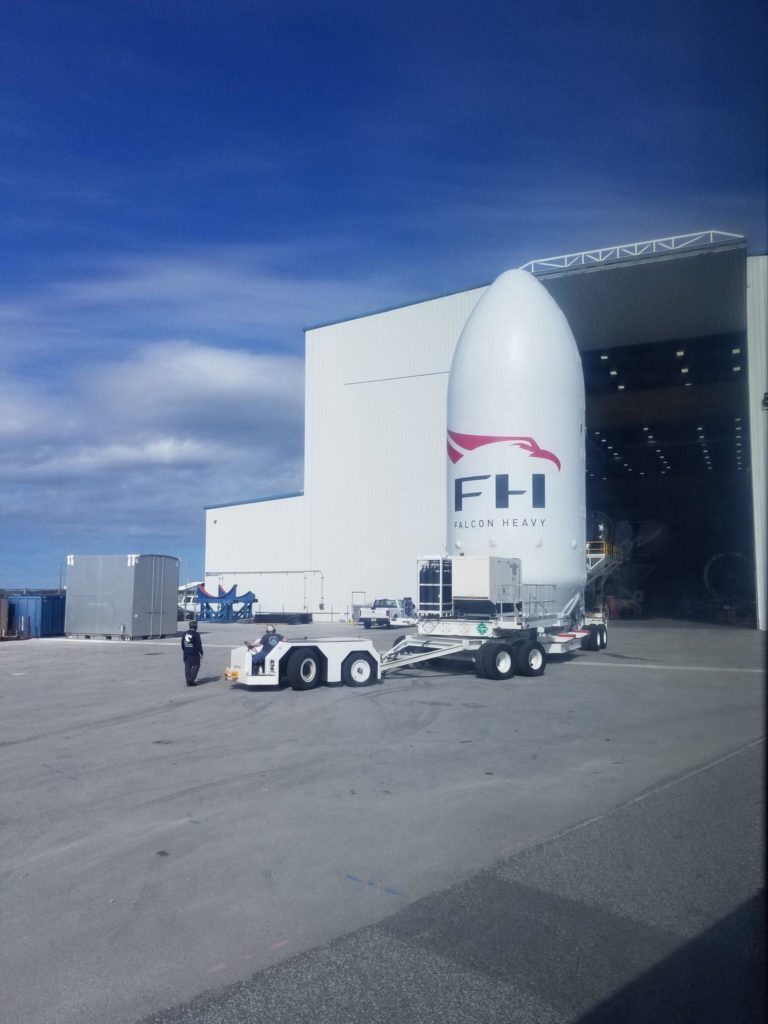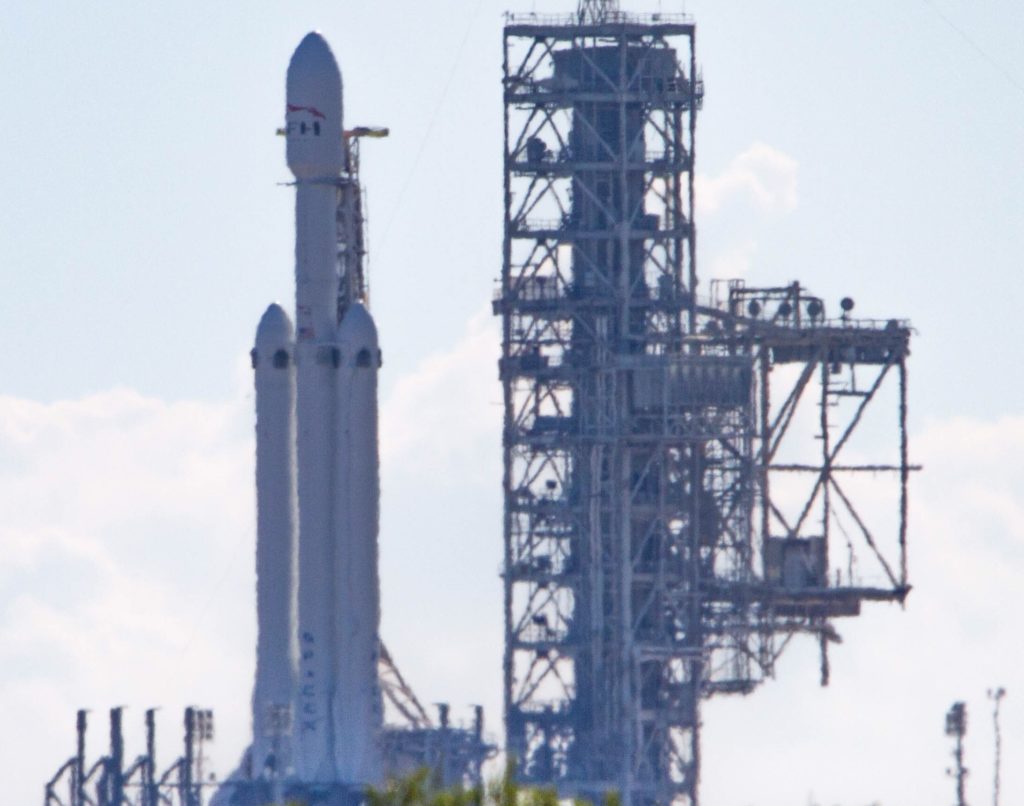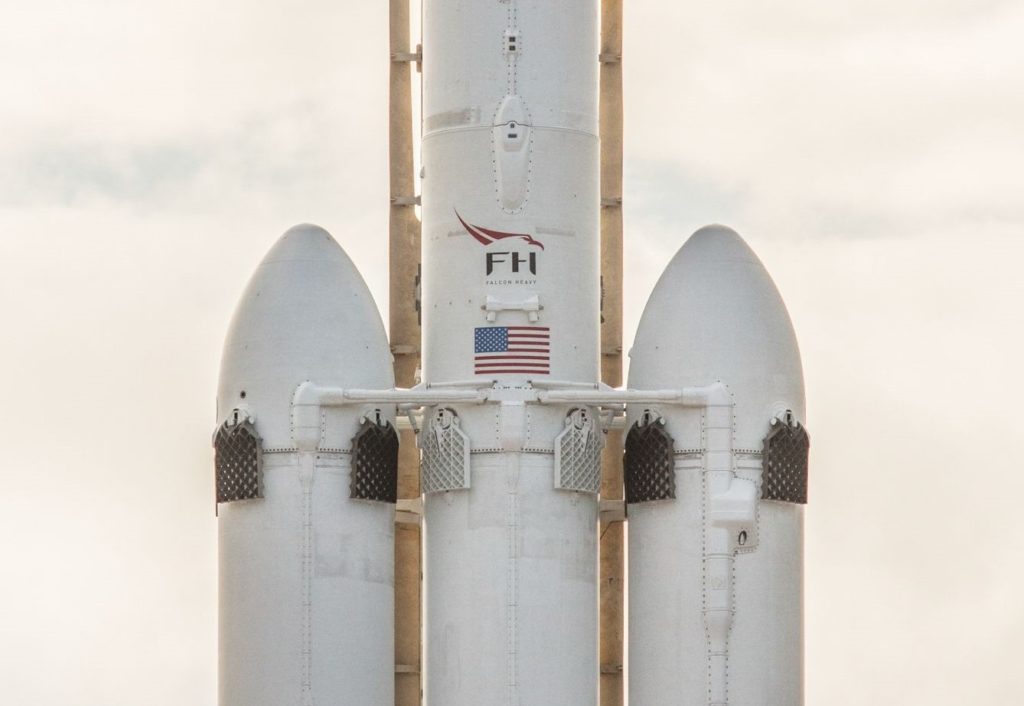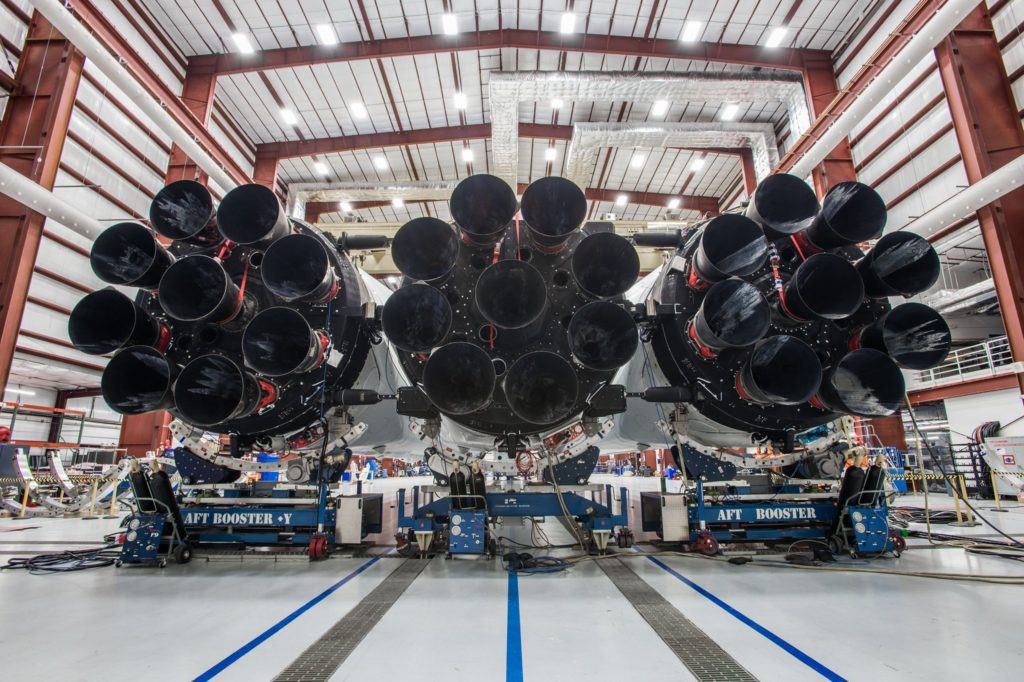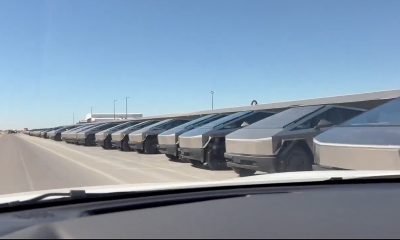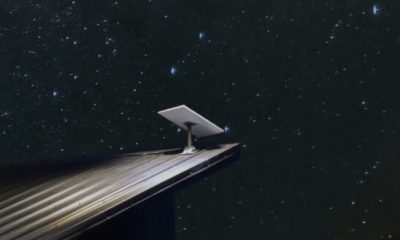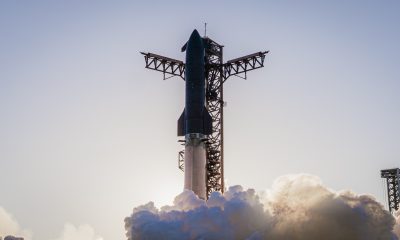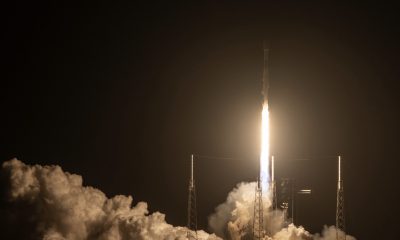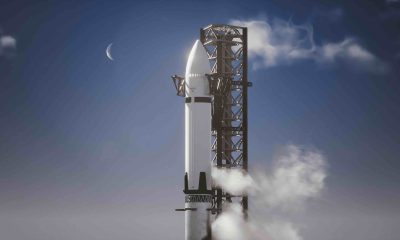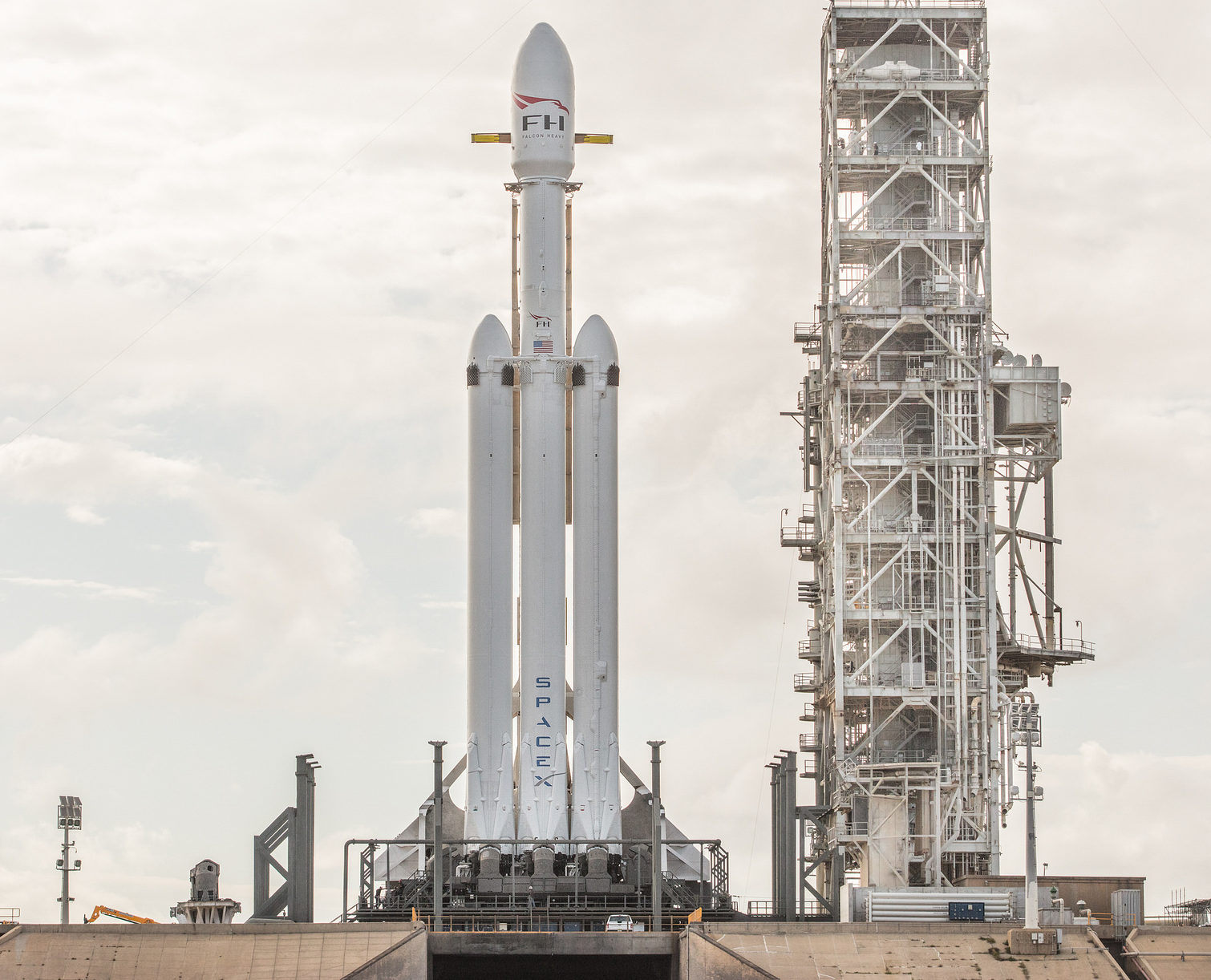
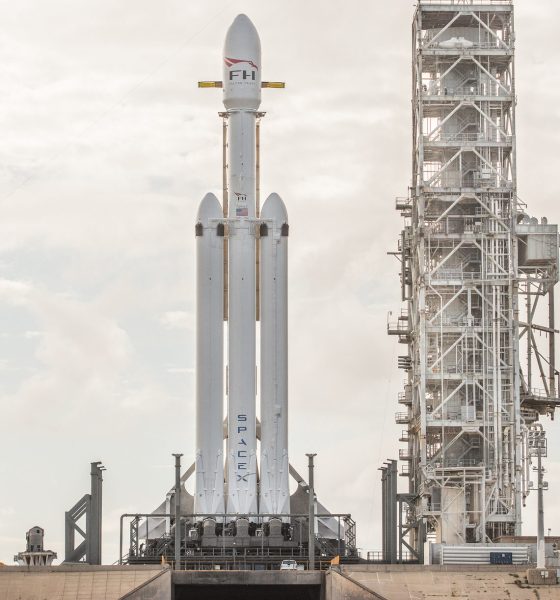
News
SpaceX gets ready to fire up Falcon Heavy for the first time at Cape Canaveral
As it gradually nears a launch date sometime in late January or early February, SpaceX’s new super-heavy launch vehicle (SHLV) Falcon Heavy has weathered a number of schedule delays in preparation for a historic and crucial moment – its first static fire/test ignition that’s currently scheduled for Tuesday, January 16, beginning at 4pm EST (2100 GMT).
Those focused on the gritty details of SpaceX’s prelaunch procedures will have immediately noted how different Falcon Heavy’s operations are when compared with SpaceX’s workhorse rocket and Heavy’s progenitor, Falcon 9. For a typical launch of Falcon 9, the rocket and payload will normally arrive at the given launch pad around a month or so before the anticipated launch date. Next, the satellite payload is encapsulated inside Falcon 9’s payload fairing, typically two or so weeks before launch. Pad facilities would be thoroughly examined after the previous launch to remedy any wear and tear and ensure that it is in good working order ahead of the next mission. Approximately a week before launch, Falcon 9’s first and second stages are mated together inside the pad’s integration facilities, the pad’s Transport/Erector/Launcher (TEL) is rolled into the integration facilities, and the Falcon 9 booster and second stage (sans payload) are mounted onto the TEL. Finally, the TEL and rocket are rolled out to the launch pad for a brief 3-5 second static fire around 5-7 days before launch. After testing is completed, the TEL is rolled back to the integration facilities, the payload fairing and payload are attached to the rocket, and the whole stack is once more rolled back to the pad, ready for launch.
- The TEL seen at LC-39A in early 2017. (SpaceX)
- The base of the TEL now sports multiple additional launch clamps (large grey protrusions) that will be needed for Falcon Heavy’s three first stage cores. (SpaceX)
- Finally, the fairing is transported vertically to the HIF, where it can be flipped horizontal and attached to its rocket. (Reddit /u/St-Jed-of-Calumet)
For a used booster, this is the sum total of the prelaunch procedures it will go through at the pad, after recovery and refurbishment. For all new boosters, however, SpaceX currently conducts a thorough slate of tests for all Merlin 1D and MVac (2nd stage) rocket engines, as well as both the integrated first and second stages at its McGregor, Texas facilities. These tests last far longer than those conducted at the launch pad, and typically run for the full length of a launch in order to better simulate the stresses flight hardware will end up experiencing. In other words, new Falcon 9 hardware always has to make it through hundreds of seconds of live firing and post-test analysis before finally being shipped to SpaceX’s launch facilities, where it conducts the aforementioned brief static fire at the pad.
A whole new bird of prey
To put it simply, Falcon Heavy is a whole different animal when it comes to prelaunch testing. Due to the rocket’s sheer size and power in its fully integrated state, McGregor simply does not have the capability to conduct the same tests it does with Falcon 9. While two of the first Heavy’s three first stage boosters are modified flight-proven Falcon 9s (from Thaicom-8 and CRS-9), the center core required a far more extensive suite of changes from a normal Falcon 9 in order to survive the added stresses it would experience during a Falcon Heavy launch. Although the full-up vehicle could not be tested in Texas with a full-length firing, each of its three first stages and upper stage went through the same tests as a normal Falcon 9. Before that, both side core and center core structural test articles (STA) went through a large amount of mechanical stress testing to verify that Falcon Heavy’s re-engineered design would be able to easily survive the stresses of launch and then some. In short, months and months of work have gone into the hardware that both preceded and makes up the Falcon Heavy rocket currently vertical and weeks from launch at Kennedy Space Center.
However, SpaceX has learned the hard way that simulation and partial physical testing can only go so far, and cannot be completely trusted when it comes to flying new hardware, as evidenced by the both Falcon 1 and the company’s several first attempts at recovering a Falcon 9 booster (intact, at least…). Even the best and most brilliant engineers and technicians can only do so much without testing the real thing in real conditions, something that can often result in unintended failures – especially the case with new technologies. Falcon Heavy is indeed a new technology to some extent or at least incorporates numerous new technologies that SpaceX has little to no operational experience with. These and relatively untried aspects include the simultaneous ignition and operation of twenty seven already powerful Merlin 1D engines, new stresses on the center booster during launch, a unique non-explosive side booster separation mechanism, the also near-simultaneous recovery of three first stages, and a second stage tasked with placing an unusual payload in the highest orbit SpaceX has yet to attempt.
Hence Elon Musk’s aggressive expectation maintenance over the last year or so, in which he spared no punches while imparting upon several audiences the likelihood that Falcon Heavy’s first launch would fail entirely, and maybe even destroy the launch pad. In reality, SpaceX is clearly doing everything in their power to ensure that the massive rocket’s first launch is a total success.
- Falcon Heavy vertical at Pad 39A on Thursday, January 11. After a successful rehearsal, the static fire was scrubbed due to a small hardware bug. (Tom Cross/Teslarati)
- The white bars in this photo are half of Falcon Heavy’s seperation mechanism. A number of actuators take the place of the more common solid rocket motors used with vehicles like the Delta IV Heavy. (SpaceX)
- Falcon Heavy’s three boosters and 27 Merlin 1D engines on full display. (SpaceX)
What’s next for Falcon Heavy?
Recent delays to the vehicle’s first static fire test at SpaceX’s Launch Complex 39A are strong examples of this cautious approach. While fans and outsiders alike may be nipping at the bit for the vehicle’s long-awaited inaugural static fire and launch, SpaceX clearly is laser-focused on very thoroughly testing the vehicle and is exerting great caution. After the first static fire attempt was delayed, reportedly due to a buggy launch clamp, SpaceX had nevertheless completed its first (presumably successful) wet dress rehearsal (WDR), which saw the vehicle prepared for launch with a full load of propellant and other miscellaneous fluids. After a brief period back horizontal at the pad, likely to repair whatever fault initially caused the delay, Falcon Heavy has been vertical at the pad for the last several days. Intriguingly, albeit unsurprisingly, tank venting was reported early Sunday by local observers. This indicates that SpaceX conducted at least one additional wet dress rehearsal with Falcon Heavy, likely both contributing to an additional delay of the replacement static fire date (Monday) and solidifying confidence in the new test date, Tuesday, January 16.
Compared with the results of the first WDR (a three-day delay), the one day delay that followed Sunday’s rehearsal is great news for what is effectively a mature launch vehicle prototype. SpaceX’s confidence is clearly growing, and while all delays of the static fire will likely push back the launch date at least as much, Falcon Heavy will almost certainly find itself days away from its inaugural liftoff sometime in very late January or February 2018.
Follow along live as Teslarati’s launch photographer Tom Cross covers Falcon Heavy’s exciting series of events while they happen on our Instagram.

News
Tesla teases new market entrance with confusing and cryptic message
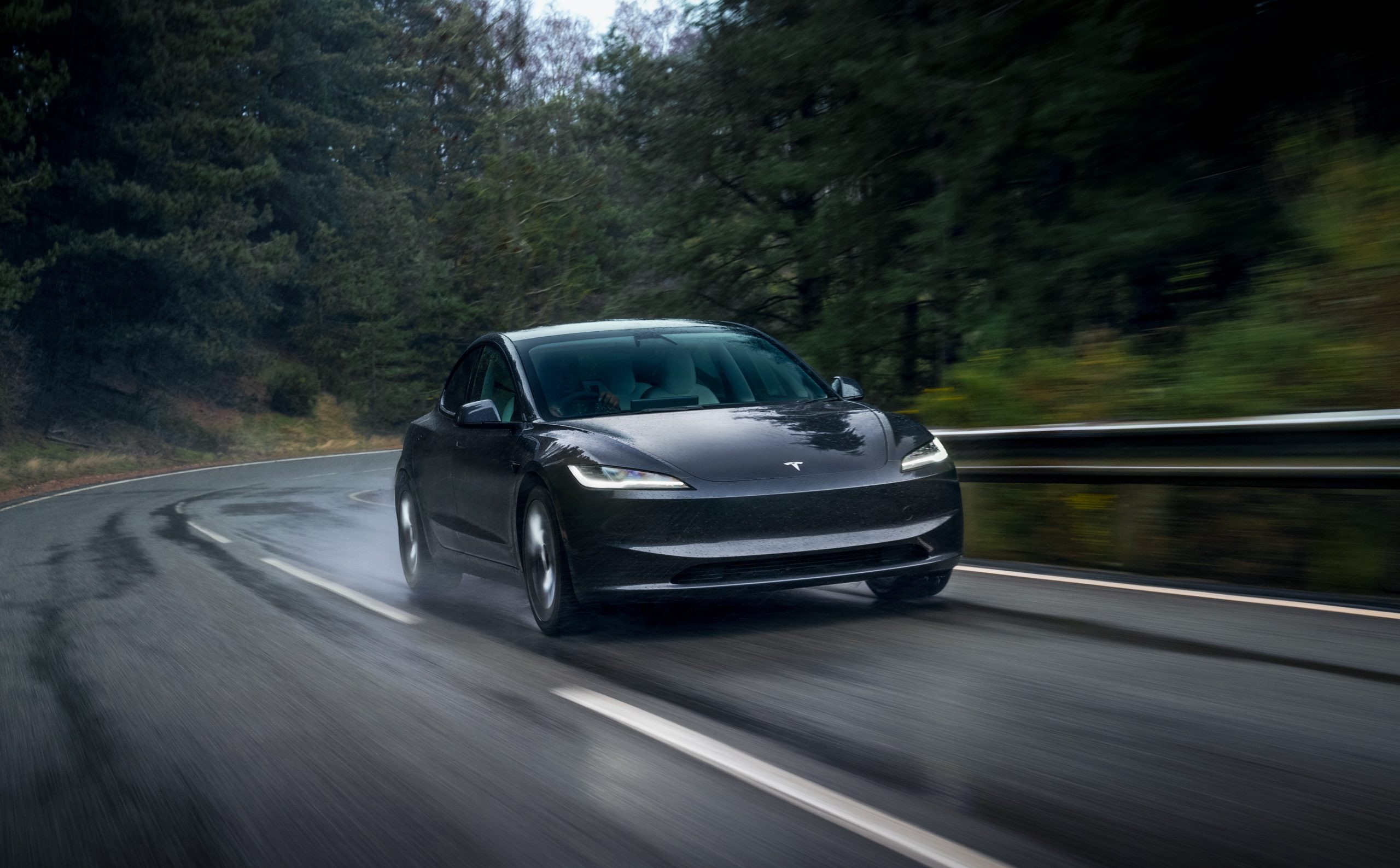
Tesla teased its entrance into a new market with a confusing and what appeared to be cryptic message on the social media platform X.
The company has been teasing its entrance into several markets, including Africa, which would be a first, and South America, where it only operates in Chile.
In September, Tesla started creating active job postings for the Colombian market, hinting it would expand its presence in South America and launch in a new country for the first time in two years.
The jobs were related to various roles, including Associate Sales Manager, Advisors in Sales and Delivery, and Service Technicians. These are all roles that would indicate Tesla is planning to launch a wide-scale effort to sell, manage, and repair vehicles in the market.
Last night, Tesla posted its latest hint, a cryptic video that seems to show the outline of Colombia, teasing its closer than ever to market entry:
— Tesla North America (@tesla_na) November 12, 2025
This would be the next expansion into a continent where it does not have much of a presence for Tesla. Currently, there are only two Supercharger locations on the entire continent, and they’re both in Chile.
Tesla will obviously need to expand upon this crucial part of the ownership experience to enable a more confident consumer base in South America as a whole. However, it is not impossible, as many other EV charging infrastructures are available, and home charging is always a suitable option for those who have access to it.
Surprisingly, Tesla seems to be more concerned about these middle-market countries as opposed to the larger markets in South America, but that could be by design.
If Tesla were to launch in Brazil initially, it may not be able to handle the uptick in demand, and infrastructure expansion could be more difficult. Brazil may be on its list in the upcoming years, but not as of right now.
News
Tesla expands crucial Supercharging feature for easier access
It is a useful tool, especially during hours of congestion. However, it has not been super effective for those who drive non-Tesla EVs, as other OEMs use UI platforms like Google’s Android Auto or Apple’s iOS.
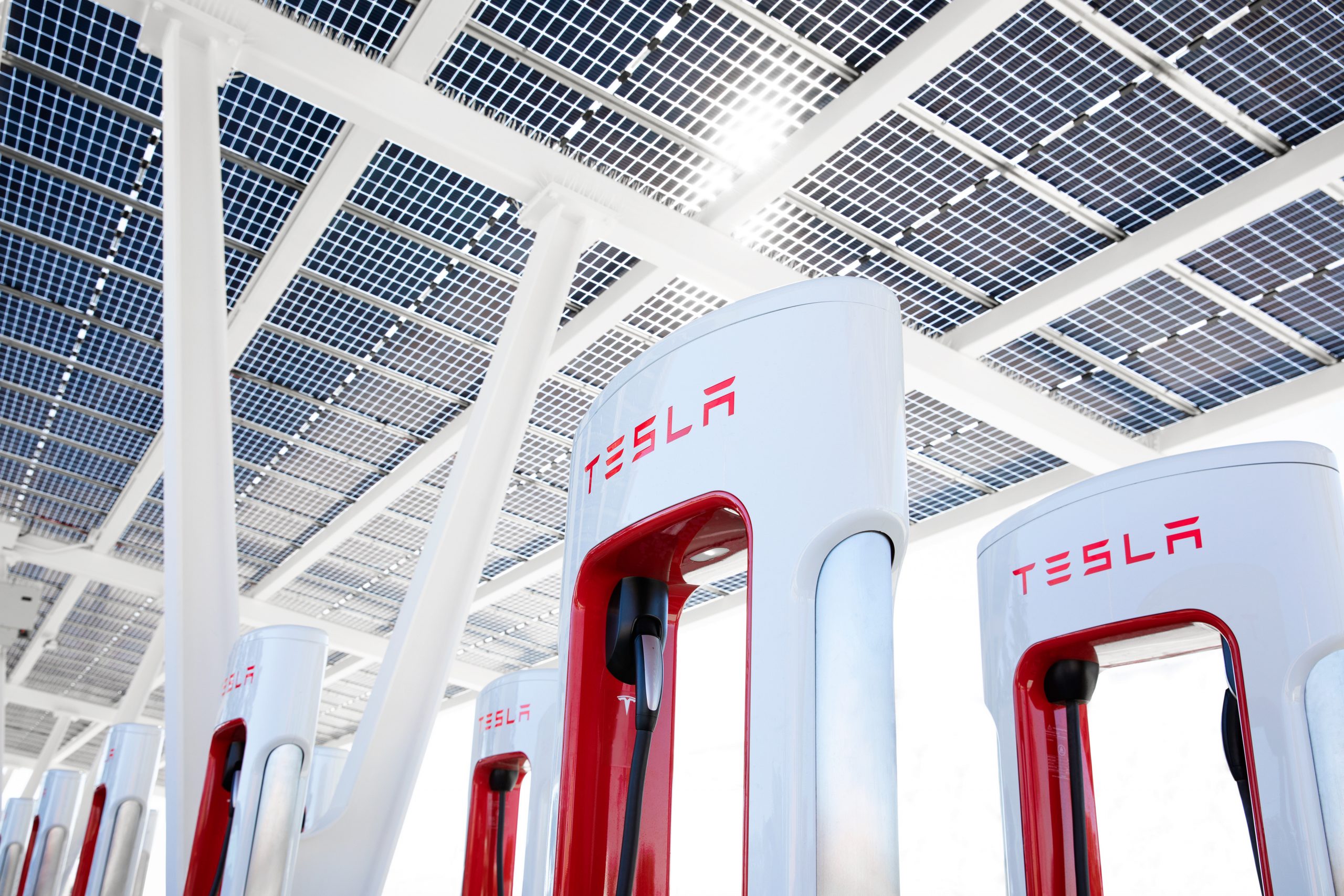
Tesla has expanded a crucial Supercharging feature that helps owners identify stall availability at nearby locations.
Tesla said on Tuesday night that its “Live Availability” feature, which shows EV owners how many stalls are available at a Supercharger station, to Google Maps, a third-party app:
Live availability of Superchargers now in Google Maps pic.twitter.com/DJvS83wVxm
— Tesla Charging (@TeslaCharging) November 11, 2025
Already offering it in its own vehicles, the Live Availability feature that Teslas have is a helpful feature that helps you choose an appropriate station with plugs that are immediately available.
A number on an icon where the Supercharger is located lets EV drivers know how many stalls are available.
It is a useful tool, especially during hours of congestion. However, it has not been super effective for those who drive non-Tesla EVs, as other OEMs use UI platforms like Google’s Android Auto or Apple’s iOS.
Essentially, when those drivers needed to charge at a Supercharger that enables non-Tesla EVs to plug in, there was a bit more of a gamble. There was no guarantee that a plug would be available, and with no way to see how many are open, it was a risk.
Tesla adding this feature allows people to have a more convenient and easier-to-use experience if they are in a non-Tesla EV. With the already expansive Supercharger Network being available to so many EV owners, there is more congestion than ever.
This new feature makes the entire experience better for all owners, especially as there is more transparency regarding the availability of plugs at Supercharger stalls.
It will be interesting to see if Tesla is able to expand on this new move, as Apple Maps compatibility is an obvious goal of the company’s in the future, we could imagine. In fact, this is one of the first times an Android Auto feature is available to those owners before it became an option for iOS users.
Apple owners tend to get priority with new features within the Tesla App itself.
Elon Musk
Elon Musk’s Boring Co goes extra hard in Nashville with first rock-crushing TBM
The Boring Company’s machine for the project is now in final testing.
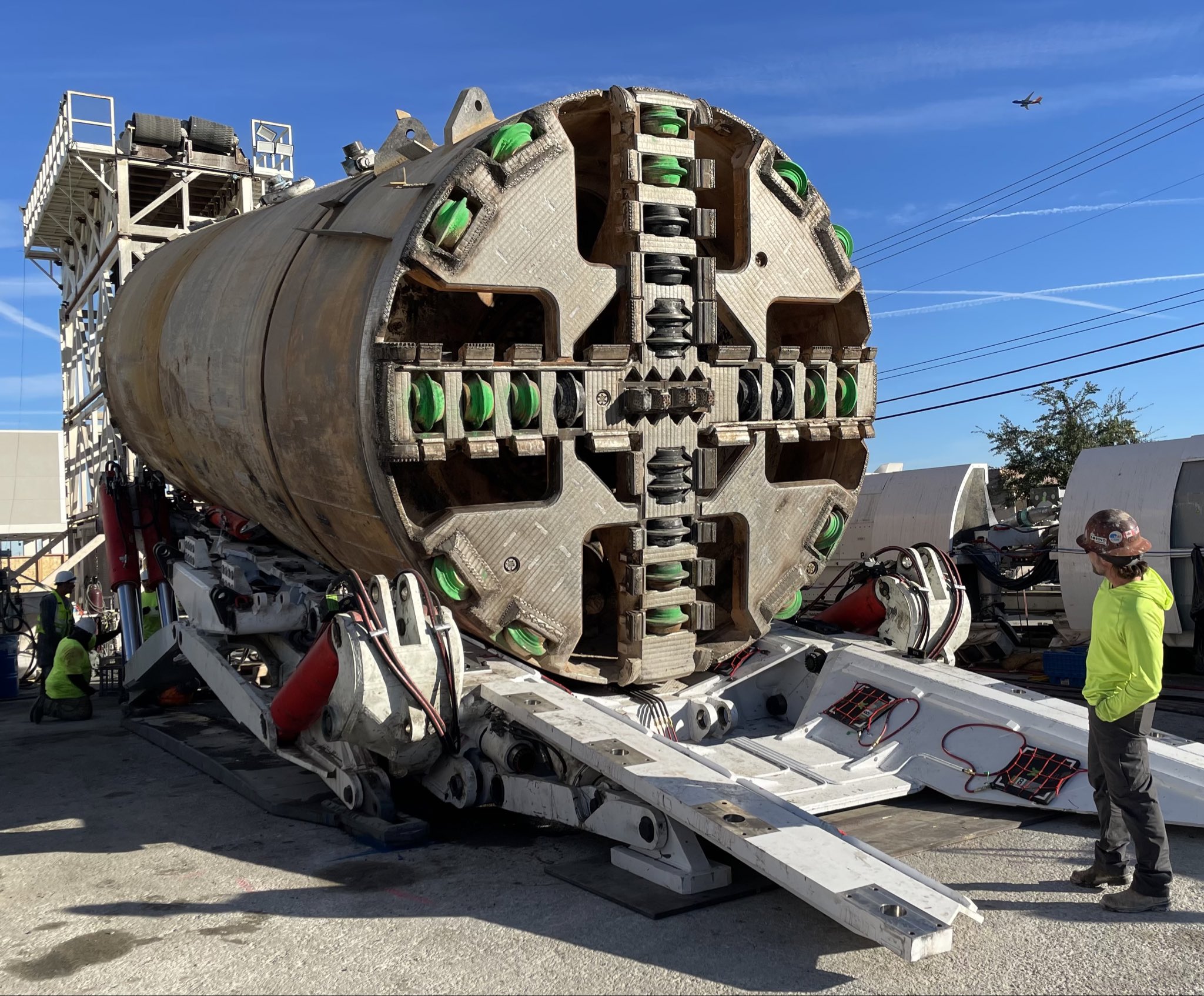
The Boring Company is gearing up to tackle one of its toughest projects yet, a new tunnel system beneath Nashville’s notoriously tough limestone terrain. Unlike the soft-soil conditions of Las Vegas and Austin, the Music City Loop will require a “hard-rock” boring machine capable of drilling through dense, erosion-resistant bedrock.
The Boring Company’s machine for the project is now in final testing.
A boring hard-rock tunneling machine
The Boring Company revealed on X that its new hard-rock TBM can generate up to 4 million pounds of grip force and 1.5 million pounds of maximum thrust load. It also features a 15-filter dust removal system designed to keep operations clean and efficient during excavation even in places where hard rock is present.
Previous Boring Co. projects, including its Loop tunnels in Las Vegas, Austin, and Bastrop, were dug primarily through soft soils. Nashville’s geology, however, poses a different challenge. Boring Company CEO and President Steve Davis mentioned this challenge during the project’s announcement in late July.
“It’s a tough place to tunnel, Nashville. If we were optimizing for the easiest places to tunnel, it would not be here. You have extremely hard rock, like way harder than it should be. It’s an engineering problem that’s fairly easy and straightforward to solve,” Davis said.
Nashville’s limestone terrain
Experts have stated that the city’s subsurface conditions make it one of the more complex tunneling environments in the U.S. The Outer Nashville Basin is composed of cherty Mississippian-age limestone, a strong yet soluble rock that can dissolve over time, creating underground voids and caves, as noted in a report from The Tennessean.
Jakob Walter, the founder and principal engineer of Haushepherd, shared his thoughts on these challenges. “Limestone is generally a stable sedimentary bedrock material with strength parameters that are favorable for tunneling. Limestone is however fairly soluble when compared to other rack materials, and can dissolve over long periods of time when exposed to water.
“Unexpected encounters with these features while tunneling can result in significant construction delays and potential instability of the excavation. In urban locations, structures at the ground surface should also be constantly monitored with robotic total stations or similar surveying equipment to identify any early signs of movement or distress,” he said.
-
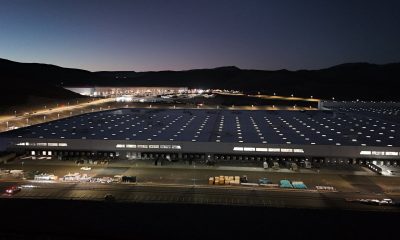
 News5 days ago
News5 days agoTesla shares rare peek at Semi factory’s interior
-

 Elon Musk5 days ago
Elon Musk5 days agoTesla says texting and driving capability is coming ‘in a month or two’
-

 News4 days ago
News4 days agoTesla makes online ordering even easier
-
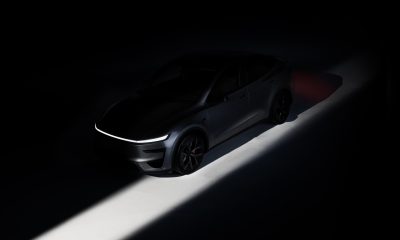
 News4 days ago
News4 days agoTesla Model Y Performance set for new market entrance in Q1
-
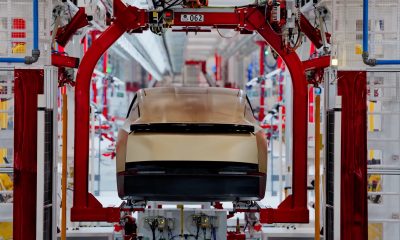
 News5 days ago
News5 days agoTesla Cybercab production starts Q2 2026, Elon Musk confirms
-
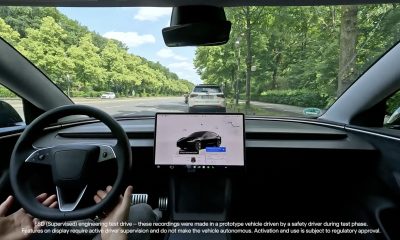
 News5 days ago
News5 days agoTesla China expecting full FSD approval in Q1 2026: Elon Musk
-
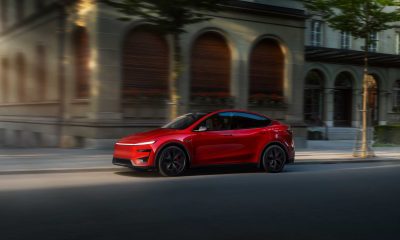
 News6 days ago
News6 days agoTesla Model Y Performance is rapidly moving toward customer deliveries
-
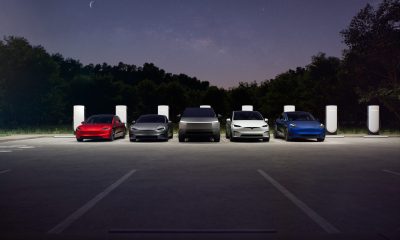
 News3 days ago
News3 days agoTesla is launching a crazy new Rental program with cheap daily rates
